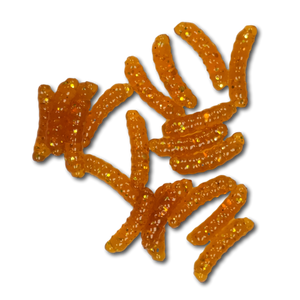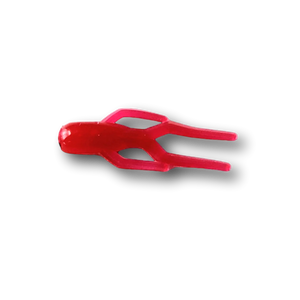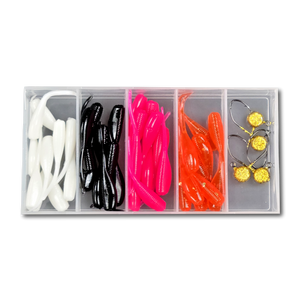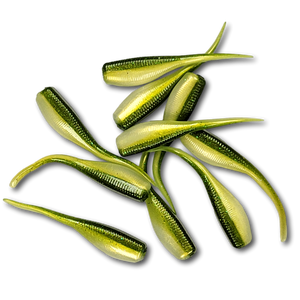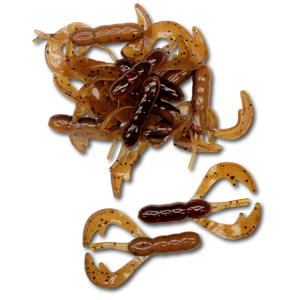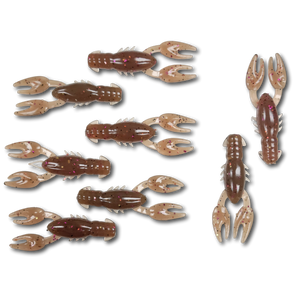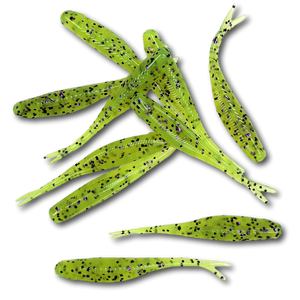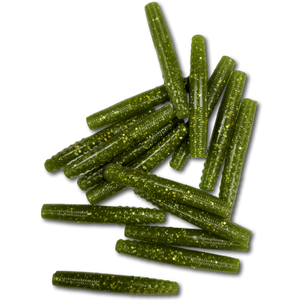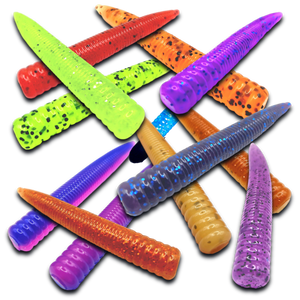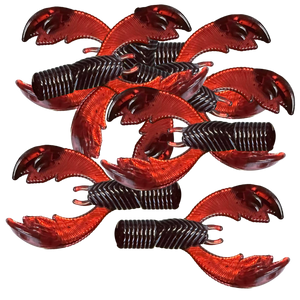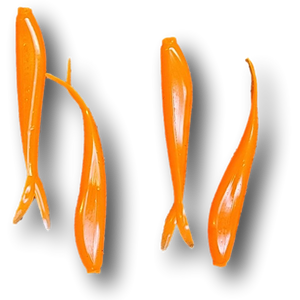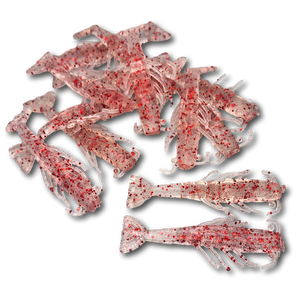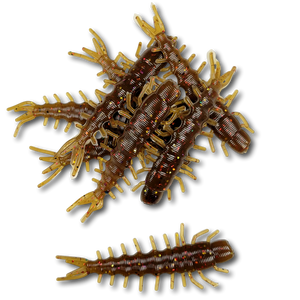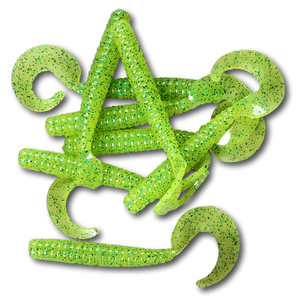Soft baits are crafted from pliable materials that allow for realistic movement and lifelike textures. These baits are designed to imitate natural prey such as minnows, crawfish, worms, frogs, and insects. Their versatility lies in the sheer variety of profiles, rigging options, and presentations available, making them suitable for virtually any fishing situation.
Soft baits can be rigged to match your target species, water conditions, and fishing style. Whether you’re flipping heavy cover, dragging deep ledges, or finessing finicky fish, soft baits provide the flexibility to adapt and succeed.
Soft baits encompass a wide range of profiles, each tailored to specific fishing scenarios and prey imitations:
- Imitate crawfish with lifelike claws and natural movement.
- Best for bottom-dwelling presentations near rocks, vegetation, or structure.
- Feature a streamlined, subtle design for finesse techniques.
- Ideal for wacky rigs, Texas rigs, or weightless setups.
- Mimic baitfish with natural swimming action.
- Effective for covering water quickly or targeting active fish.
- Slim and subtle, designed for delicate presentations.
- Perfect for drop shot rigs, shaky heads, or Carolina rigs.
- Feature multiple appendages for extra vibration and movement.
- Ideal for flipping, pitching, or dragging through heavy cover.
- Topwater soft baits designed to mimic amphibians.
- Best for fishing lily pads, grass mats, and other dense vegetation.
- Simple yet effective, with a single or twin tail for fluttering action.
- Great for jig heads, spinnerbait trailers, or finesse applications.
- Unique shapes like hellgrammites, gobies, and willowcats for targeting specific prey preferences.
- Ideal for niche presentations in rivers, lakes, and reservoirs.
Soft baits excel because of their ability to mimic natural forage with lifelike detail and movement. Their pliable texture encourages fish to hold on longer, increasing your chances of a solid hookset.
The versatility of soft baits means you can use them in countless ways, from slow finesse techniques in clear water to aggressive power fishing in heavy cover. Their adaptability and effectiveness make them indispensable for targeting a variety of species and conditions.
Soft baits can be fished using countless rigs and techniques, including:
- Texas Rig: A weedless presentation for fishing soft baits in heavy cover.
- Drop Shot Rig: A finesse technique that keeps the bait hovering off the bottom for a natural presentation.
- Carolina Rig: Perfect for dragging soft baits across the bottom to cover large areas.
- Wacky Rig: Adds subtle, undulating movement to stick baits and finesse worms.
- Ned Rig: A finesse approach ideal for pressured or finicky fish.
- Weightless Presentation: Let soft baits glide naturally in shallow water or around vegetation.
- Jig Trailers: Pair soft plastics like craws, grubs, or swimbaits with jigs for added action and appeal.
When and Where to Use Soft Baits
Soft baits are effective year-round and in nearly any fishing environment:
- Spring: Target spawning fish with creature baits or craws around shallow cover.
- Summer: Use swimbaits, frogs, or finesse worms to target fish holding near grass lines, deeper ledges, or shade.
- Fall: Mimic baitfish with stick baits, swimbaits, or grubs as fish feed aggressively before winter.
- Winter: Slow down your presentation with finesse worms or specialty profiles like hellgrammites to tempt lethargic fish.
Soft baits are equally effective in lakes, rivers, ponds, and reservoirs, adapting to the structure, depth, and prey preferences of your target species.
Best Colors and Sizes for Soft Baits
Selecting the right color and size ensures you’re matching the hatch and maximizing your success:
- Natural Colors: Green pumpkin, watermelon, and brown are staples for clear water.
- Bright Colors: Chartreuse, pink, and white stand out in stained or murky water.
- Glow Options: Glow-in-the-dark colors add visibility in low-light or deep-water conditions.
Soft baits range from small profiles for panfish and trout to larger sizes for targeting trophy bass or walleye.
Why Every Angler Needs Soft Baits
Soft baits are an essential tool for any angler because of their versatility, lifelike action, and ability to target a wide variety of species. From subtle finesse techniques to aggressive power fishing, soft baits provide the flexibility to adapt to changing conditions and fish behaviors.
Their affordability, durability, and effectiveness make them a reliable choice for both novice and experienced anglers.
Tips for Fishing Soft Baits
- Match the Hatch: Choose colors and profiles that resemble the forage in your local waters.
- Experiment with Rigs: Don’t be afraid to try different setups to find what works best for the conditions.
- Slow It Down: In colder water or tough conditions, slow retrieves or pauses can make soft baits even more effective.
- Keep a Variety: Stock your tackle box with a mix of profiles, sizes, and colors to stay prepared for any situation.
Soft baits are a cornerstone of modern fishing, offering unmatched realism, adaptability, and success across a variety of fishing scenarios. Whether you’re fishing for bass, walleye, panfish, or trout, there’s a soft bait profile that’s perfect for the job. Stock up on your favorite styles, experiment with new techniques, and let soft baits transform your fishing game.
Qwik Catches!




